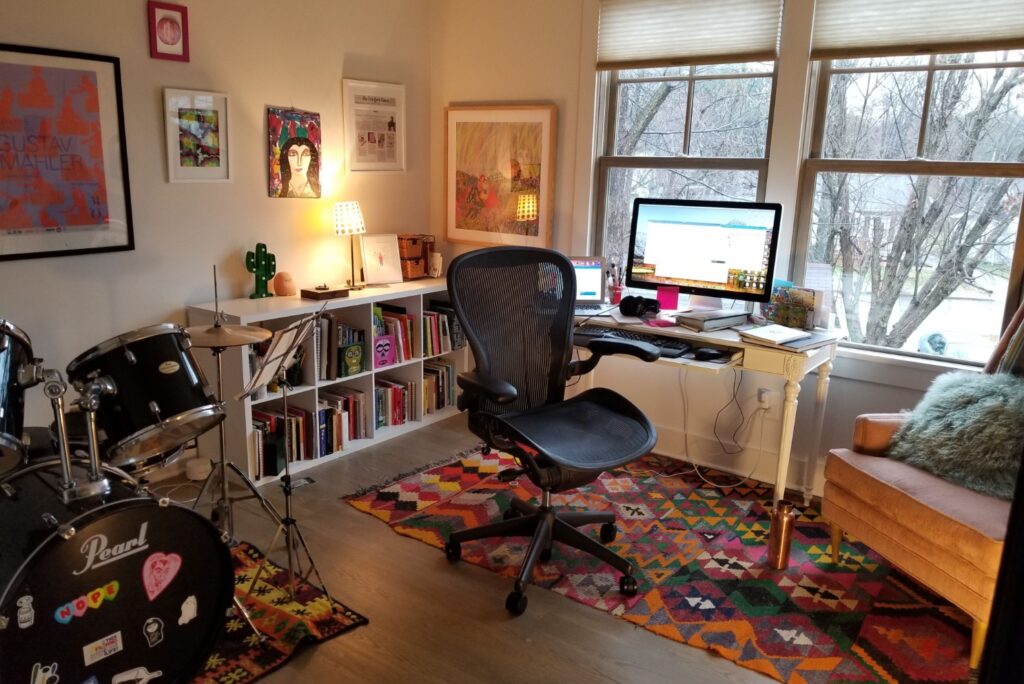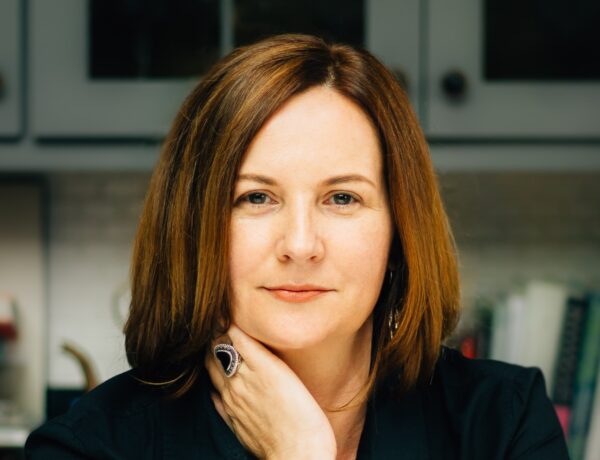Malaka Gharib is a multi-talented journalist, cartoonist and graphic novelist, who has made a name for herself in the literary world with her unique blend of storytelling and illustration.
With her works, she has not only captured the hearts of readers but also won several awards, including the 2020 Arab American Book Award for her debut graphic memoir I Was Their American Dream. She is also the author of It Won’t Always Be Like This. In her day job, Malaka works as an editor at NPR, where she contributes comics and articles.
Her work has been featured in several publications such as NPR, The Los Angeles Times, Catapult, The Seventh Wave Magazine, The Nib, Saveur Magazine, The Believer Magazine and The New Yorker. Her work has also been recognized and profiled in The Washington Post and The New York Times. Malaka currently resides in Nashville, Tenn. where she continues to create and inspire others with her work.
Photo credit: Maro Mercene
Each week, we publish a new daily writing routine from a famous author. Subscribe to our newsletter so you don’t miss out!
Hi Malaka! We’re delighted to have you as a guest on Famous Writing Routines. For our readers who may not be familiar with your work, could you please give us a brief introduction to yourself?
I’m a journalist, cartoonist and a graphic novelist. I’m an editor on the NPR podcast Life Kit and get to do a little reporting, podcast hosting and cartooning for NPR. I’ve also written and drawn a couple of graphic memoirs. And I also love making zines! I make tiny ones that I post to my Instagram about little musings that I have about love, longing, nature and memories from my childhood.
I Was Their American Dream won the 2020 Arab American Book Award, can you share with us your inspiration behind it and what you hope readers will take away from it?
I wrote this book as a way to explore my relationship to my Egyptian Filipino American identity. I realized that I was almost turning 30 and hadn’t thought critically about how I felt about my ethnicity. Was I proud of it? Ashamed? What aspects of my culture did I want to take into my adulthood? What did I want to leave behind? The book explores those questions and also what it means to have my own American Dream.
You have a variety of writing and drawing experience, from journalism to graphic novels. How do you balance different mediums and styles in your creative process?
I try to think of the story first then think about which medium might make sense for it. Sometimes a short musing makes most sense as a mini zine. Sometimes a longer observation might make more sense as a creative nonfiction essay. I have a lot of fun with this as a journalist, sometimes I’ll draw a printable brochure to go along with an article, or even a poster.
Discover the daily writing habits of authors like Stephen King, Neil Gaiman, and Gillian Flynn with Famous Writing Routines Vol. 1 and learn how to take your writing to the next level. Grab your copy today!
As an editor at NPR, how does your work in journalism influence your writing and storytelling in your graphic novels?
I treat my own personal history with the same journalistic rigor as my day job. When I source my memories, I make sure I can corroborate them. So for example in I Was Their American Dream, I drew a social map of my high school. I called classmates who I hadn’t talked to in over a decade to see if my memories of where different friend groups sat on the quad tracked.
I am also big on consent. For my new book, It Won’t Always Be Like This, which is about my summers in the Middle East, my relationship with my stepmom and her divorce with my dad, I asked my stepmom and dad several times whether they were OK with me writing about their relationship. My stepmom doesn’t speak English, so I had my siblings translate the book for her and then translate back her feedback on the writing.
Your comics and writing have been published in a variety of outlets such as The New Yorker, The Believer Magazine and Saveur Magazine. How do you approach writing and drawing for different audiences and publications?
As a journalist I feel confident about how to write a pitch — you really need to know the publication you’re pitching to, who their audience is and what they’re all about. You also need to know why your cartoon or story is relevant to the publication right now. Thinking through that stuff is the hardest part — after that the comic comes easy.
Can you take us through your creative process? What does a typical writing day look like for you?
Since I have a day job as an editor, much of it is made up of meetings, reading up on the news and editing. I also get to do a lot of creative work at NPR, too. I just finished working on a little comic for kids on climate change with NPR, and next week I’m working on a paper doll for a story about exercising in the cold.
But I always try to make time during my day to do a personal project of some kind. Sometimes that means saving links for my newsletter, A List of Beautiful Things, sometimes it’s taking a moment to finish up a cartoon I started the day before, sometimes that means drawing a little zine and posting it to my Instagram, just to flex my creative muscles.
Can you talk about any specific techniques or rituals you have for getting into a creative mindset before starting a new project?
I give myself the grace of taking the time I need to get mentally prepared for the project. Sitting there looking at an empty screen is part of the process. So is going for a walk and thinking through a couple of ideas. So is preparing your file in Photoshop. I used to think, gosh, I’m wasting hours not creating! But doing those mundane bits is creating. And I think people forget that.
How do you handle writer’s block and maintain creativity in your writing?
I don’t really believe in writer’s block. Part of your job as a professional creative is to perform under pressure. If the idea that you’ve been chewing on isn’t working, move on to another idea. You have to have the discipline and determination to keep going back to the drawing board, even though you don’t feel like it.
I learned that by working on my two books. I had deadlines to meet and was working a day job, but still had to set aside time every night after work to draw, write or work on edits, even though I was feeling tired or drained from my day. I just learned to muster the energy I had to do the best I could with the time I had.
What does your creative workspace look like?
I have my own office! It faces a window and is very pleasant. I used to have drums in here but not anymore. I donated it to a kid whose house burned down, and with it, his precious drum set! I also have a lot of art supplies on my desk, like gel pens, paper, scissors, if I’m in meetings it gives my hands something to do.

Affiliate disclaimer: Some links on this website are affiliate links. We may earn a small commission if you make a purchase through these links, but only promote products we truly believe in. We disclose affiliate links and give honest reviews.



No Comments